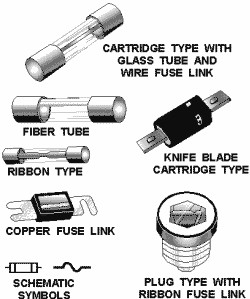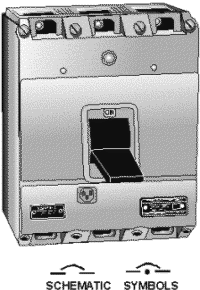Module 3 -- Introduction to Circuit Protection, Control, and Measurement
Pages i,
1-1,
1-11,
1-21,
1-31,
1-41,
1-51,
1-61,
1-71,
2-1,
2-11,
1-21,
2-31,
2-41,
3-1,
3-11,
3-21,
3-31,
AI-1,
AII-1,
AIII-1,
IV-1,
Index
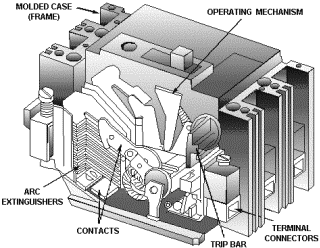
Figure 2-16 - Circuit breaker components.
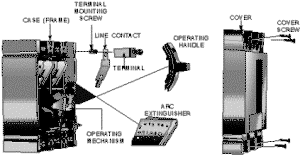
Figure 2-17 - Circuit breaker construction.
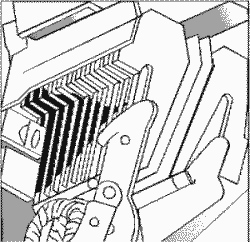
Figure 2-18 - Arc extinguisher action.
The FRAME provides an insulated housing and is used to mount
the circuit breaker components (fig. 2-17). The frame determines the physical
size of the circuit breaker and the maximum allowable voltage and current.
The OPERATING MECHANIsM provides a means of opening and closing
the breaker contacts (turning, the circuit ON and ofF). The toggle mechanism shown
in figure 2-17 is the quick-make, quick-break type, which means the contacts snap
open or closed quickly, regardless of how fast the handle is moved. In addition
to indicating whether the breaker is ON or ofF, the operating mechanism handle indicates
when the breaker has opened automatically (tripped) by moving to a position between
ON and ofF. To reset the circuit breaker, the handle must first be moved to the
ofF position, and then to the ON position.
2-21
The ARC EXTINGUIsHER confines, divides, and extinguishes the
arc drawn between contacts each time the circuit breaker interrupts current. The
arc extinguisher is actually a series of contacts that open gradually, dividing
the arc and making it easier to confine and extinguish. This is shown in figure
2-18. Arc extinguishers are generally used in circuit breakers that control a large
amount of power, such as those found in power distribution panels. Small power circuit
breakers (such as those found in lighting panels) may not have arc extinguishers.
TERMINAL CONNECTORS are used to connect the circuit breaker to
the power source and the load. They are electrically connected to the contacts of
the circuit breaker and provide the means of connecting the circuit breaker to the
circuit.
The TRIP ELEMENT is the part of the circuit breaker that senses
the overload condition and causes the circuit breaker to trip or break the circuit.
This chapter will cover the thermal, magnetic, and thermal-
2-22
magnetic trip units used by most circuit breakers. (Some circuit breakers make use of solid-state trip units using current transformers and solid-state circuitry.)
THERMAL TRIP ELEMENT
A thermal trip element circuit breaker uses a bimetallic element that is heated
by the load current. The bimetallic element is made from strips of two different
metals bonded together. The metals expand at different rates as they are heated.
This causes the bimetallic element to bend as it is heated by the current going
to the load. Figure 2-19 shows how this can be used to trip the circuit breaker.
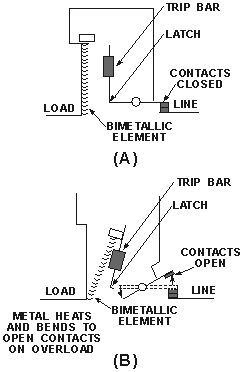
Figure 2-19 - Thermal trip element action: A. Trip element with
normal current; B. Contacts open.
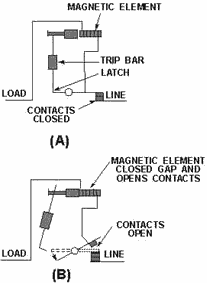
Figure 2-20 - Magnetic trip element action; Closed contacts
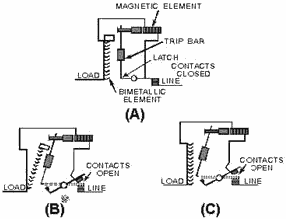
Figure 2-21 - Thermal-magnetic element action
Figure 2-19, view A, shows the trip element with normal current. The bimetallic
element is not heated excessively and does not bend. If the current increases (or
the temperature around the circuit breaker increases), the bimetallic element bends,
pushes against the trip bar, and releases the latch. Then, the contacts open, as
shown in figure 2-19, view B.
The amount of time it takes for the bimetallic
element to bend and trip the circuit breaker depends on the amount the element is
heated. a large overload will heat the element quickly. a small overload will require
a longer time to trip the circuit breaker.
Magnetic TRIP
ELEMENT
A magnetic trip element circuit breaker uses an
electromagnet in series with the circuit load as in figure 2-20. With normal current,
the electromagnet will not have enough attraction to the trip bar to move it, and
the contacts will remain closed as shown in figure 2-20, view A. The strength of
the magnetic field of the electromagnet increases as current through the coil increases.
As soon as the current in the circuit becomes large enough, the trip bar is pulled
toward the magnetic element (electromagnet), the contacts are opened, and the current
stops, as shown in figure 2-20, view B.
2-23
The amount of current needed to trip the circuit breaker depends on the size
of the gap between the trip bar and the magnetic element. On some circuit breakers,
this gap (and therefore the trip current) is adjustable.
THERMAL-Magnetic TRIP ELEMENT
The thermal trip element circuit breaker, like a delay fuse, will protect a circuit
against a small overload that continues for a long time. The larger the overload,
the faster the circuit breaker will trip.
The thermal element will also protect
the circuit against temperature increases. a magnetic circuit breaker will trip
instantly when the preset current is present. In some applications, both types of
protection are desired. Rather than use two separate circuit breakers, a single
trip element combining thermal and magnetic trip elements is used. a thermal-magnetic
trip element is shown in figure 2-21.
2-24
In the thermal-magnetic trip element circuit breaker, a magnetic element (electromagnet)
is connected in series with the circuit load, and a bimetallic element is heated
by the load current. With normal circuit current, the bimetallic element does not
bend, and the magnetic element does not attract the trip bar, as shown in figure
2-21, view A.
If the temperature or current increases over a sustained period of time, the
bimetallic element will bend, push the trip bar and release the latch. The circuit
breaker will trip as shown in figure 2-21, view B.
If the current suddenly or rapidly increases enough, the magnetic element will
attract the trip bar, release the latch, and the circuit breaker will trip, as shown
in figure 2-21, view C. (This circuit breaker has tripped even though the thermal
element has not had time to react to the increased current.)
Q30. What are the five main components of a circuit breaker?
Q31. What are the three types of circuit breaker trip elements?
Q32. How does each type of trip element react to an overload?
TRIP-FREE/NON-TRIP-FREE Circuit BREAKERS
Circuit breakers are classified as being trip free or non-trip free. a trip-free
circuit breaker is a circuit breaker that will trip (open) even if the operating
mechanism (ON-ofF switch) is held in the ON position. a non-trip-free circuit breaker
can be reset and/or held ON even if an overload or excessive heat condition is present.
In other words, a non-trip-free circuit breaker can be bypassed by holding the operating
mechanism ON.
Trip-free circuit breakers are used on circuits that cannot tolerate overloads
and on nonemergency circuits. Examples of these are precision or current sensitive
circuits, nonemergency lighting circuits, and nonessential equipment circuits. Non-trip-free
circuit breakers are used for circuits that are essential for operations. Examples
of these circuits are emergency lighting, required control circuits, and essential
equipment circuits.
2-25
TIME DELAY RATINGS
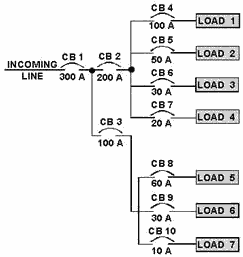
Figure 2-22. - use of circuit breakers in a power distribution
system.
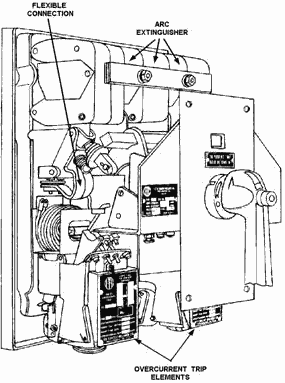
Figure 2-23. - Circuit breaker with an operating handle.
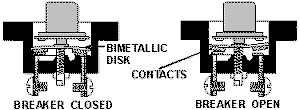
Figure 2-24. - Push-button circuit breaker.
Circuit breakers, like fuses, are rated by the amount of time delay. In circuit
breakers the ratings are instantaneous, short time delay, and longtime delay. The
delay times of circuit breakers can be used to provide for SELECTIVE TRIPPING.
Selective tripping is used to cause the circuit breaker closest to the faulty
circuit to trip. This will remove power from the faulty circuit without affecting
other, non-faulty circuits. Figure 2-22 should help you understand selective tripping.
Figure 2-22 shows a power distribution system using circuit breakers for protection.
Circuit breaker 1 (CB1) has the entire current for all seven loads through it.
CB2 feeds loads 1, 2, 3, and 4 (through CB4, CB5, CB6, and CB7), and CB3 feeds loads
5, 6, and 7 (through CB8, CB9, and CB10). If all the circuit breakers were rated
with the same time delay, an overload on load 5 could cause CB1, CB3, and CB8 to
trip. This would remove power from all seven loads, even though load 5 was the only
circuit with an overload.
Selective tripping would have CB1 rated as long time delay, CB2 and CB3 rated
as short time delay, and CB4 through CB10 rated as instantaneous. With this arrangement,
if load 5 had an overload, only CB8 would trip. CB8 would remove the power from
load 5 before CB1 or CB3 could react to the overload. In this way, only load 5 would
be affected and the other circuits would continue to operate.
PHYSICAL TYPES of Circuit BREAKERS
All the circuit breakers presented so far in this chapter have been physically
large, designed to control large amounts of power, and used a type of toggle operating
mechanism. Not all circuit breakers are of this type. The circuit breaker in figure
2-23 is physically large and controls large amounts of power; but the operating
mechanism is not a toggle. Except for the difference in the operating mechanism,
this circuit breaker is identical to the circuit breakers already presented.
2-26
Circuit breakers used for low power protection, such as 28-volt dc, 30 amperes,
can be physically small. With low power use, arc extinguishers are not required,
and so are not used in the construction of these circuit breakers. Figure 2-24 shows
a low power circuit breaker of the push-button or push-pull type. This circuit breaker
has a thermal trip element (the bimetallic disk) and is non-trip-free. The push
button is the operating mechanism of this circuit breaker.
2-27
You will find other physical types of circuit breakers as you work with electrical
circuits. They are found in power distribution systems, lighting panels, and even
on individual pieces of equipment. Regardless of the physical size and the amount
of power through the circuit breaker, the basic operating principles of circuit
breakers apply.
Q33. What is a trip-free circuit breaker?
Q34. What is a non-trip-free circuit breaker?
Q35. Where should you use a trip-free circuit breaker?
Q36. Where should you use a non-trip-free circuit breaker?
The magnetic trip element makes use of a magnetic element (electromagnet). If
current reaches a preset quantity, the magnetic element attracts the trip bar and
releases the latch.
The thermal-magnetic trip element combines the actions of the bimetallic and
magnetic elements in a single trip element. If either the bimetal element or the
magnetic element reacts, the circuit breaker will trip.
Q37. What are the three time delay ratings for circuit breakers?
Q38. What is selective tripping and why is it used?
Q39. If the power distribution system shown in figure 2-22 uses selective tripping,
what is the time delay rating for each of the circuit breakers shown?
Q40. What factors are used to select a circuit breaker?
Q41. What type of circuit breaker is used on a multimeter?
Circuit BREAKER Maintenance
Circuit breakers require careful inspection and periodic cleaning. Before you
attempt to work on circuit breakers, check the applicable technical manual carefully.
When you work on shipboard circuit breakers, the approval of the electrical or engineering
officer must be obtained before starting work. Be certain to remove all power to
the circuit breaker before you work on it. Tag the switch that removes the power
to the circuit breaker to ensure that power is not applied while you are working.
Once approval has been obtained, the incoming power has been removed, the switch
tagged, and you have checked the technical manual, you may begin to check the circuit
breaker. Manually operate the circuit breaker several times to be sure the operating
mechanism works smoothly. Inspect the contacts for
2-28
pitting caused by arcing or corrosion. If pitting is present, smooth the contacts
with a fine file or number 00 sandpaper. Be certain the contacts make proper contact
when the operating mechanism is ON.
Check the connections at the terminals to be certain the terminals and wiring
are tight and free from corrosion. Check all mounting hardware for tightness and
wear. Check all components for wear. Clean the circuit breaker completely.
When you have finished working on the circuit breaker, restore power and remove
the tag from the switch that applies power to the circuit.
Q42. What steps are to be taken before beginning work on a circuit breaker? Q43.
What items are you to check when working on a circuit breaker?
Summary
This chapter has provided the information to enable you to have a basic understanding
of circuit protection devices. The following is a summary of the main points in
this chapter.
Circuit PROTECTION DEVICES are needed to protect personnel and
circuits from hazardous conditions. The hazardous conditions can be caused by a
direct short, excessive current, or excessive heat. Circuit protection devices are
always connected in series with the circuit being protected.
A Direct Short is a condition in which some point in the circuit,
where full system voltage is present, comes in direct contact with the ground or
return side of the circuit.
EXCESSIVE CURRENT describes a condition that is not a direct
short but in which circuit current increases beyond the designed current carrying
ability of the circuit.
EXCESSIVE Heat describes a condition in which the heat in or
around a circuit increases to a higher than normal level.
FUses and Circuit BREAKERS are the two types
of circuit protection devices discussed in this chapter.
2-29
PLUG-TYPE FUses
are used in low-voltage, low-current circuits. This type fuse is rapidly being
replaced by the circuit breaker.
CARTRIDGE FUses are available in a wide range of physical sizes
and voltage and current ratings. This type fuse is the most commonly used fuse.
2-30
| - |
Matter, Energy,
and Direct Current |
| - |
Alternating Current and Transformers |
| - |
Circuit Protection, Control, and Measurement |
| - |
Electrical Conductors, Wiring Techniques,
and Schematic Reading |
| - |
Generators and Motors |
| - |
Electronic Emission, Tubes, and Power Supplies |
| - |
Solid-State Devices and Power Supplies |
| - |
Amplifiers |
| - |
Wave-Generation and Wave-Shaping Circuits |
| - |
Wave Propagation, Transmission Lines, and
Antennas |
| - |
Microwave Principles |
| - |
Modulation Principles |
| - |
Introduction to Number Systems and Logic Circuits |
| - |
- Introduction to Microelectronics |
| - |
Principles of Synchros, Servos, and Gyros |
| - |
Introduction to Test Equipment |
| - |
Radio-Frequency Communications Principles |
| - |
Radar Principles |
| - |
The Technician's Handbook, Master Glossary |
| - |
Test Methods and Practices |
| - |
Introduction to Digital Computers |
| - |
Magnetic Recording |
| - |
Introduction to Fiber Optics |
| Note: Navy Electricity and Electronics Training
Series (NEETS) content is U.S. Navy property in the public domain. |
|

















